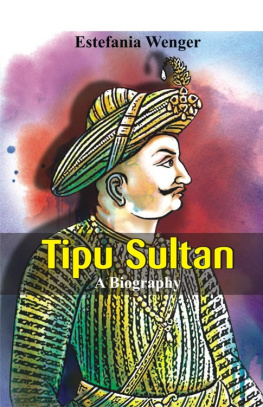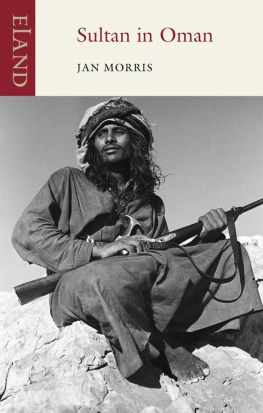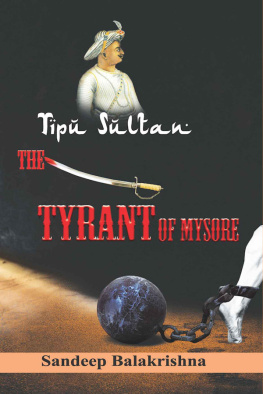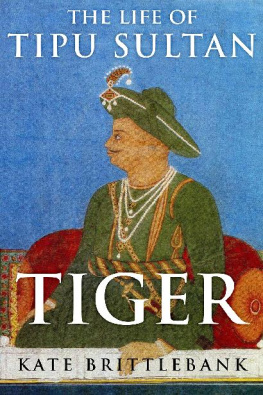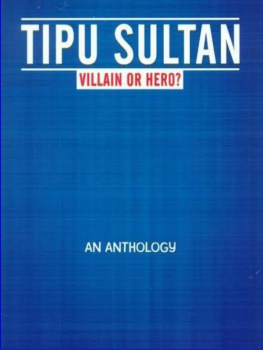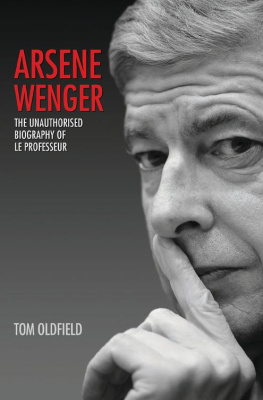Tipu Sultan
A Biography
Estefania Wenger
Alpha Editions
Copyright 2017
ISBN : 9789386367440
Design and Setting By
Alpha Editions
email - alphaedis@gmail.com
All rights reserved. No part of this publication may be reproduced, distributed, or transmitted in any form or by means, including photocopying, recording, or other electronic or mechanical methods, without the prior written permission of the publisher.
The views and characters expressed in the book are of the author and his/her imagination and do not represent the views of the Publisher.
Contents
Introduction
Early years
As Ruler of the Mysore State
Mysorean Rockets
Religious Policy
Tipu's Tiger
Tipu's Coinage
Captivity at Seringapatam
Refernces
About the Author
Introduction
Tipu Sultan also known as the Tiger of Mysore, and Tipu Sahib, was a ruler of the Kingdom of Mysore. He was the eldest son of Sultan Hyder Ali of Mysore. Tipu introduced a number of administrative innovations during his rule, including his coinage, a new Mauludi lunisolar calendar, and a new land revenue system which initiated the growth of Mysore silk industry. Tipu expanded the iron-cased Mysorean rockets and commissioned the military manual Fathul Mujahidin. He is considered a pioneer in the use of rocket artillery. Tipu Sultan deployed the rockets against advances of British forces and their allies in their 1792 and 1799 Siege of Srirangapatna.
Napoleon, the French commander-in-chief who later became emperor, sought an alliance with Tipu. In alliance with the French in their struggle with the British, and in Mysore's struggles with other surrounding powers, both Tipu and his father used their French trained army against the Marathas, Sira, and rulers of Malabar, Kodagu, Bednore, Carnatic, and Travancore. During Tipu's childhood, his father rose to take power in Mysore, and upon his father's death in 1782, Tipu succeeded to a large kingdom bordered by the Krishna River in the north, the Eastern Ghats in the east, and the Arabian Sea in the west. He won important victories against the British in the Second Anglo-Mysore War, and negotiated the 1784 Treaty of Mangalore with them after his father Hyder Ali suddenly died from cancer in December 1782 during the Second Anglo-Mysore War.
Tipu engaged in expansionist attacks against his neighbours. He remained an implacable enemy of the British East India Company, bringing them into renewed conflict with his attack on British-allied Travancore in 1789. In the Third Anglo-Mysore War, Tipu was forced into the humiliating Treaty of Seringapatam, losing a number of previously conquered territories, including Malabar and Mangalore. He sent emissaries to foreign states, including the Ottoman Turkey, Afghanistan, and France, in an attempt to rally opposition to the British. In the Fourth Anglo-Mysore War, the forces of the British East India Company, supported by the Marathas and the Nizam of Hyderabad, defeated Tipu and he was killed on 4 May 1799 while defending his fort of Srirangapatna. Tipu Sultan's image in India is complex; he is regarded both as a secular ruler who fought against British colonialism, on the other hand, he is controversial for his suppression of political dissent in Hindus, Christians and Mappla Muslims. He is said to force Manglore Catholics to convert into Muslim. Also during his reign only threes temples of his kingdom were able to offer daily Pooja.
Early years
Tipu Sultan was born on 20 November 1750 (Friday, 20th Dhu al-Hijjah, 1163 AH) at Devanahalli, in present-day Bengaluru Rural district, about 33 km (21 mi) north of Bengaluru city. He was named "Tipu Sultan" after the saint Tipu Mastan Aulia of Arcot. Tipu was also called "Sultan Sayyid walShareef Fateh Ali Khan Tipu " after his grandfather Fateh Muhammad. Tipu was born at Devanhalli in a Najeeb AlTarfayn Sayyid family meaning having ancestry to both Imams Hassan and Hussain, as the son of Hyder Ali. Being illiterate, Hyder was very particular in giving his eldest son a prince's education and a very early exposure to military and political affairs. From the age of 17 Tipu was given independent charge of important diplomatic and military missions. He was his father's right arm in the wars from which Hyder emerged as the most powerful ruler of southern India.
Tipu's father, Hyder Ali, was a military officer in service to the Kingdom of Mysore; he rapidly rose in power, and became the de facto ruler of Mysore in 1761. Hyder himself claimed descent from the Banu Hashim clan of the Quraysh tribe of Arabs, the tribe of the Islamic prophet, Muhammad. Hyder's father, Fateh Muhammad, was born in Kolar, and served as a commander of 50 men in the bamboo rocket artillery (mainly used for signalling) in the army of the Nawab of Carnatic. Fateh Muhammad eventually entered the service of the Wodeyar Rajas of the Kingdom of Mysore. Tipu's mother Fatima Fakhr-un-Nisa was the daughter of Mir Muin-ud-Din, the governor of the fort of Kadapa. Hyder Ali appointed able teachers to give Tipu an early education in subjects like Hindustani language (Hindi-Urdu), Persian, Arabic, Kannada, Quran, Islamic jurisprudence, riding, shooting and fencing.
Early military service
Tipu Sultan was instructed in military tactics by French officers in the employment of his father. At age 15, he accompanied his father against the British in the First Mysore War in 1766. He commanded a corps of cavalry in the invasion of Carnatic in 1767 at age 16. He also distinguished himself in the First Anglo-Maratha War of 17751779.
Alexander Beatson, who published a volume on the Fourth Mysore War entitled View of the Origin and Conduct of the War with Tippoo Sultaun, described Tipu Sultan as follows: "His stature was about five feet eight inches; he had a short neck, square shoulders, and was rather corpulent: his limbs were small, particularly his feet and hands; he had large full eyes, small arched eyebrows, and an aquiline nose; his complexion was fair, and the general expression of his countenance, not void of dignity".
Second Anglo-Mysore War
In 1779, the British captured the French-controlled port of Mah, which Tipu had placed under his protection, providing some troops for its defence. In response, Hyder launched an invasion of the Carnatic, with the aim of driving the British out of Madras. During this campaign in September 1780, Tipu Sultan was dispatched by Hyder Ali with 10,000 men and 18 guns to intercept Colonel Baillie who was on his way to join Sir Hector Munro. In the Battle of Pollilur, Tipu decisively defeated Baillie. Out of 360 Europeans, about 200 were captured alive, and the sepoys, who were about 3800 men, suffered very high casualties. Munro was moving south with a separate force to join Baillie, but on hearing the news of the defeat he was forced to retreat to Madras, abandoning his artillery in a water tank at Kanchipuram.
Tipu Sultan defeated Colonel Braithwaite at Annagudi near Tanjore on 18 February 1782. Braithwaite's forces, consisting of 100 Europeans, 300 cavalry, 1400 sepoys and 10 field pieces, was the standard size of the colonial armies. Tipu Sultan seized all the guns and took the entire detachment prisoner. In December 1781 Tipu Sultan successfully seized Chittur from the British. Tipu Sultan had thus gained sufficient military experience by the time Hyder Ali died on Friday, 6 December 1782 some historians put it at 2 or 3 days later or before, (Hijri date being 1 Muharram, 1197 as per some records in Persian there may be a difference of 1 to 3 days due to the Lunar Calendar). Tipu Sultan realised that the British were a new kind of threat in India. He became the ruler of Mysore on Sunday, 22 December 1782 (The inscriptions in some of Tipu's regalia showing it as 20 Muharram, 1197 Hijri Sunday), in a simple coronation ceremony. He then worked on to check the advances of the British by making alliances with the Marathas and the Mughals.

